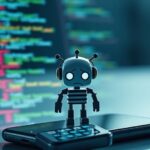
Gaming Ads Thrive with 99 Percent Viewability Why It Matters
Gaming Ads Why They Outperform Other Media Channels in Viewability and Engagement In today’s crowded digital landscape brands fight for attention across multiple channels social...


Gaming Ads Why They Outperform Other Media Channels in Viewability and Engagement In today’s crowded digital landscape brands fight for attention across multiple channels social...

How AI Agents Detect Fraudulent Behavior Tackling a Growing Concern in Competitive Game Development The world of competitive gaming is booming. Esports tournaments in-game economies...

Vibe Coding: Why Mobile Apps Haven’t Taken Off Dedicated mobile apps for vibe coding haven’t yet captured the interest of developers. Despite the increasing power...

WhatsApp Now Translates Messages Natively WhatsApp has launched a message translation feature for both iOS and Android. Now when you receive a message in a...

AI Company Superpanel Secures $5.3M Seed to Automate Legal Intake Superpanel an AI-driven company recently announced that it has successfully raised a $5.3 million seed...

Meta Launches Super PAC to Tackle AI Regulation Meta has recently launched a super PAC aimed at influencing the growing landscape of AI regulation, as...

Tim Chen A Quiet Force in Solo Investing Tim Chen has emerged as one of the most sought-after solo investors quietly making significant waves in...